Verification - Calibrated Explosives
Introduction
This document presents the verification of the calibrated explosives available in the software.
There are currently 16 calibrated explosives available in the software. Explosives are calibrated and added on request from users. Users can also calibrate explosives on their own with the object "Controlled expansion test", available on IMPETUS Market.
Version control
The tests presented in this document are subjected to version control, meaning that the models are run and evaluated prior to release of a new solver. This document is updated in conjunction with official releases of the software.
Verification - Calibrated Explosives
Calibrated explosives
The discrete particle module currently offers the following calibrated explosives:
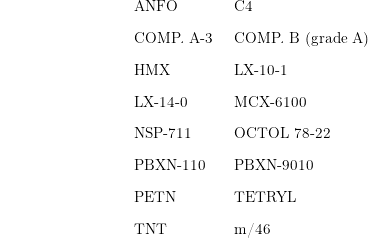
Calibrated explosives are included to an analysis with the command *PARTICLE_HE.
Explosives in the discrete particle module
Explosives are defined by the following parameters in the discrete particle module:

 ,
,  and
and  are found in literature whereas
are found in literature whereas  and
and  must be calibrated. For the calibrated explosives, the calibration was done with the model described in section "Controlled expansion test". Parametric values used for the calibrated explosives are presented in Table 1.
must be calibrated. For the calibrated explosives, the calibration was done with the model described in section "Controlled expansion test". Parametric values used for the calibrated explosives are presented in Table 1.
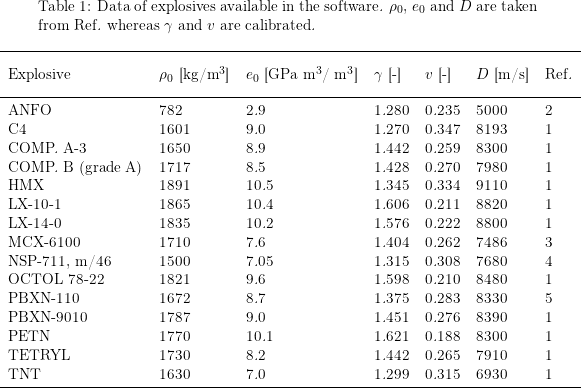
Controlled expansion test
The model consists of the explosive under consideration, detonated inside a confined volume as visible in Figure 1. The confined volume is increased gradually in a prescribed manner from 1.05 to 5.0 times the volume of the undetonated charge. A discrete particle sensor is positioned in the explosive and the pressure in this sensor is compared to the pressure calculated with the JWL (Jones-Wilkins-Lee) equation of state.
Parameter  and
and  are calibrated so that the pressure in the sensor match the pressure from the JWL equation of state for the investigated range of volume.
are calibrated so that the pressure in the sensor match the pressure from the JWL equation of state for the investigated range of volume.
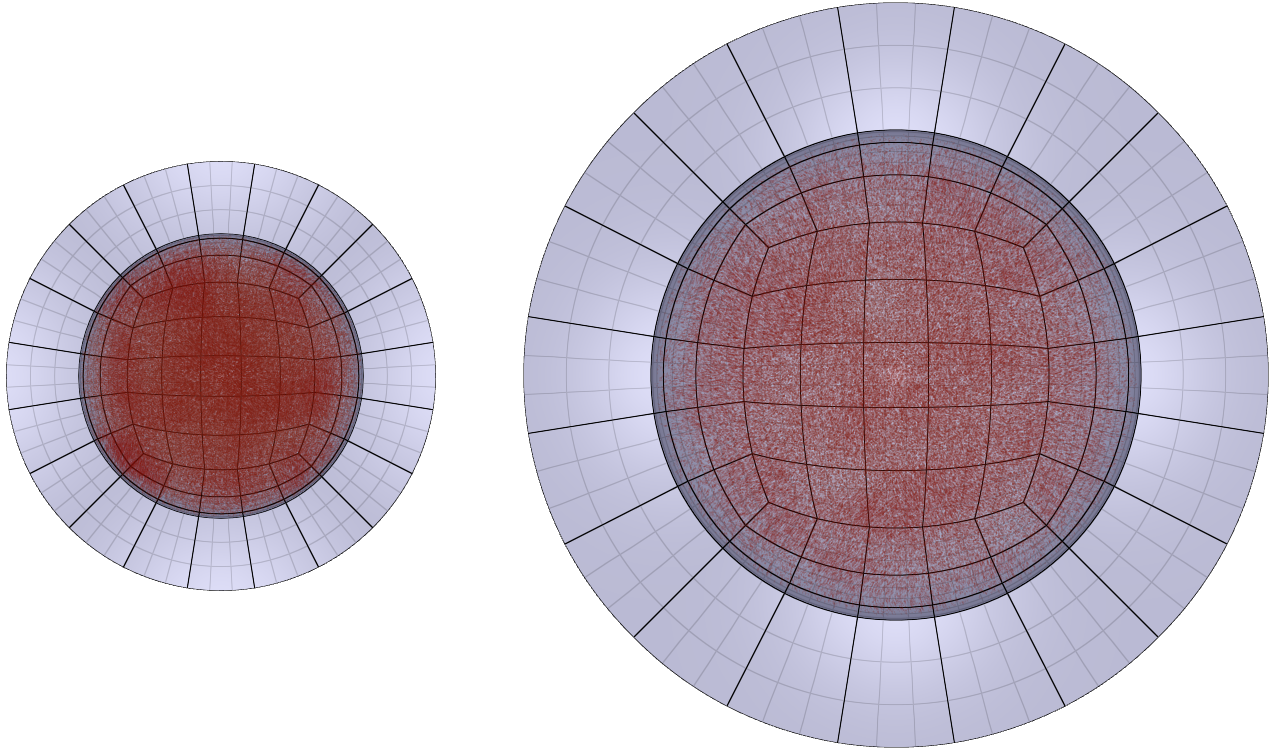
 and
and  are calibrated. The confined volume is increased gradually from the initial state (to the left) to the final state (to the right).
are calibrated. The confined volume is increased gradually from the initial state (to the left) to the final state (to the right).
The JWL equation of state is defined as:


JWL coefficients used in the calibration of the explosives are presented in Table 2. Energy per unit volume is presented in Table 1.
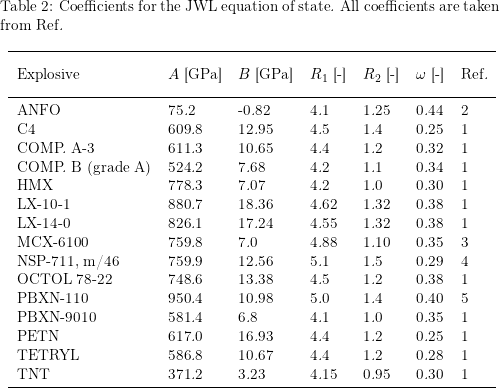
The pressure from the sensor and the pressure calculated with JWL equation of state for all calibrated explosives are presented in Figure 2 - Figure 16. The left plot in these Figures shows the pressure with linear scale whereas the right plot shows the pressure with logarithmic scale.
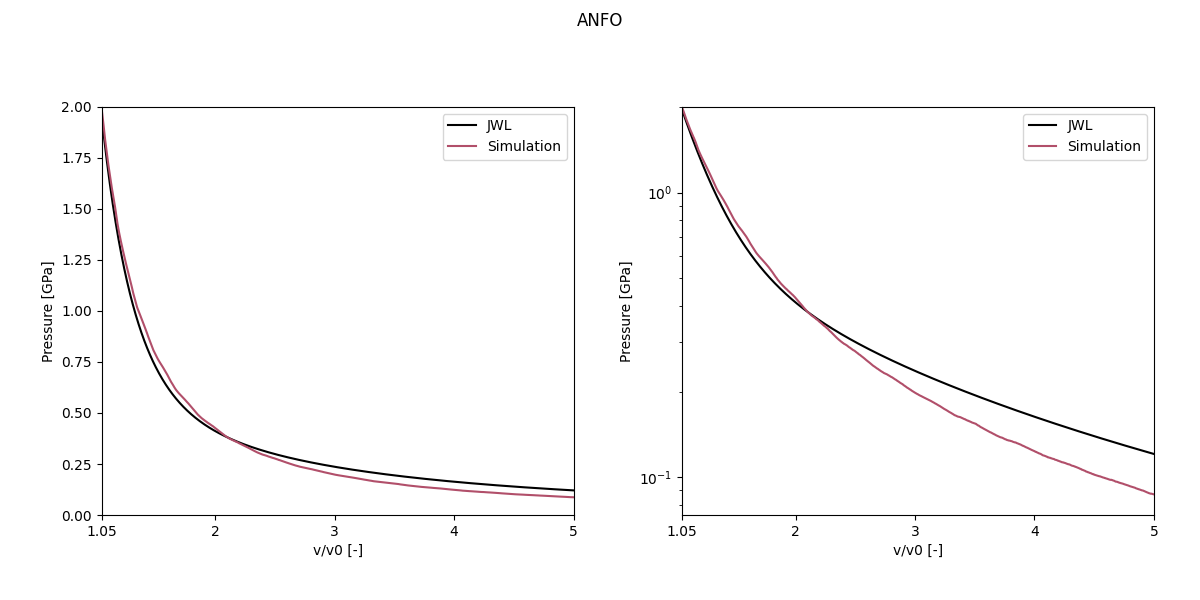

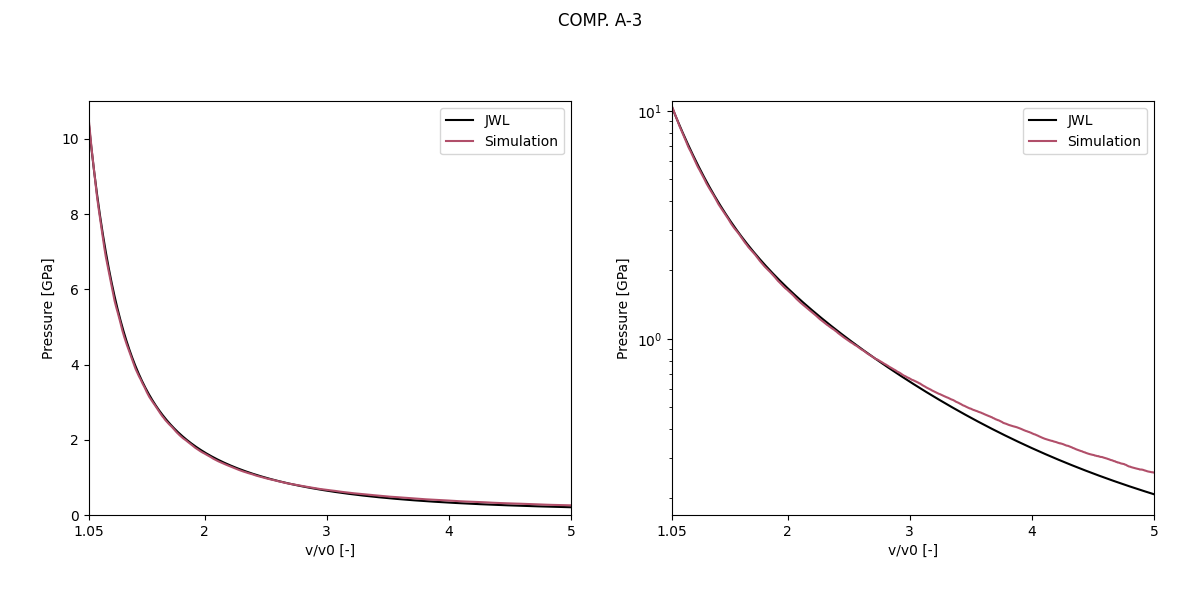
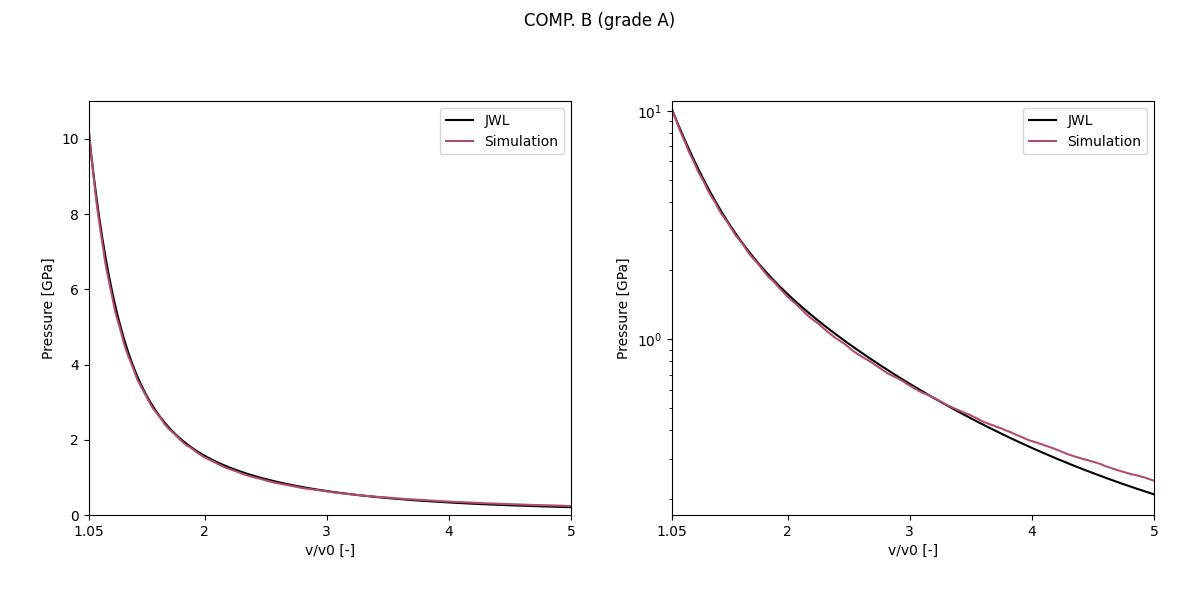
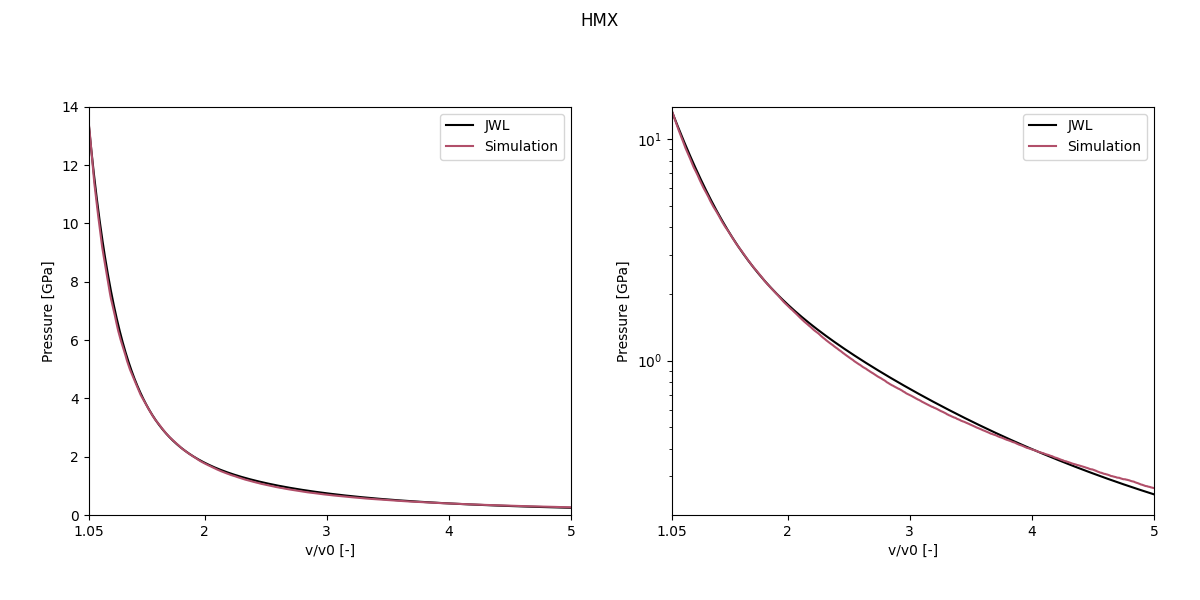
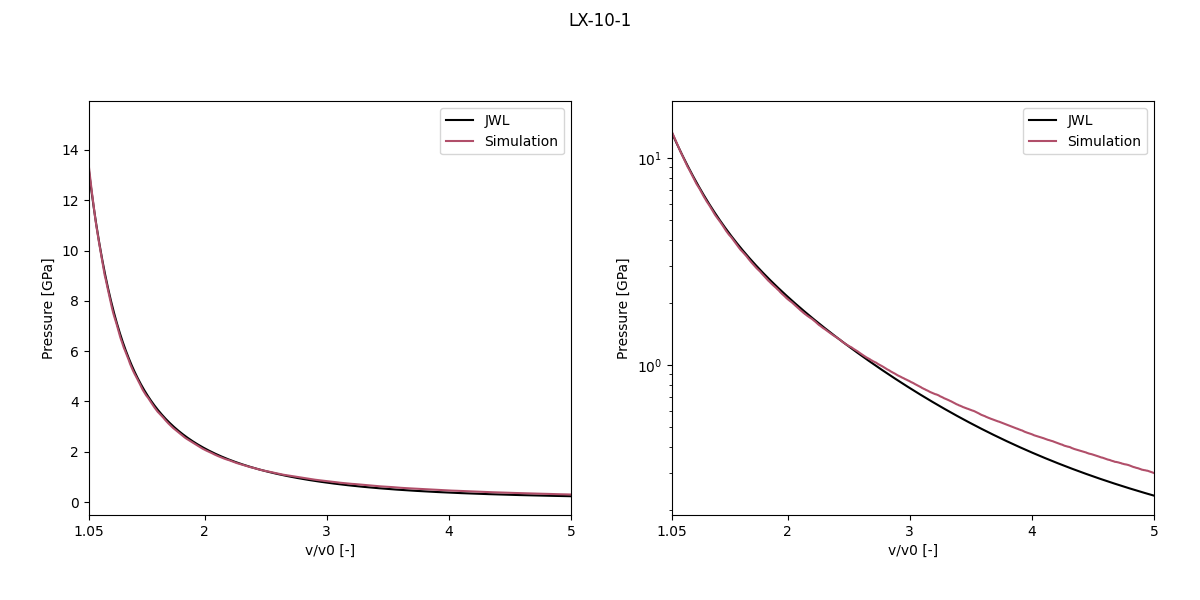
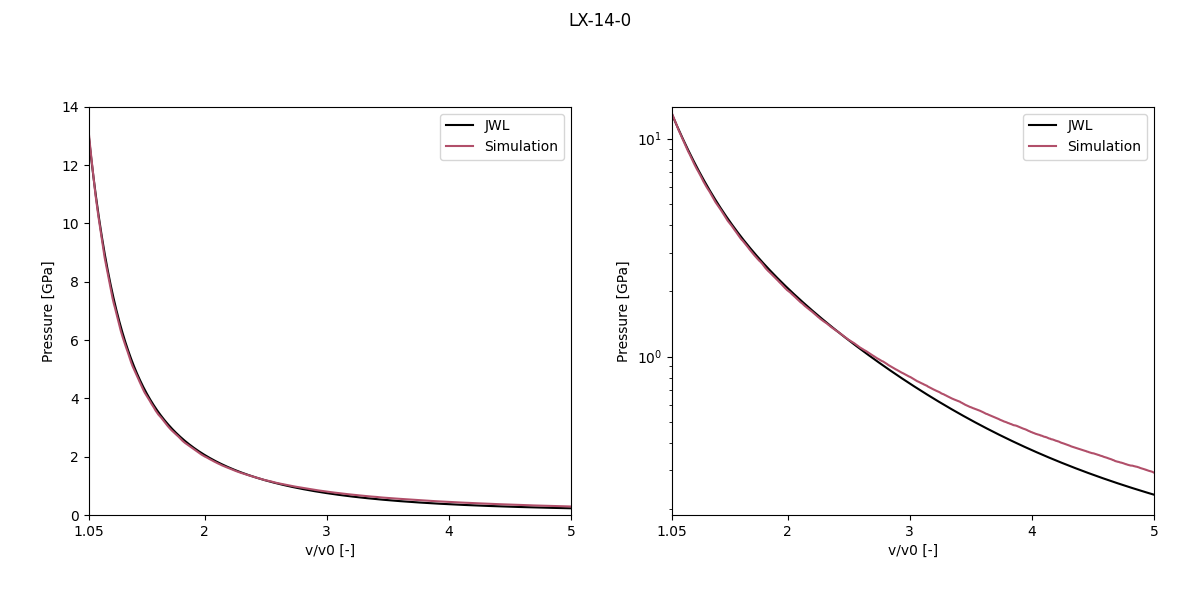
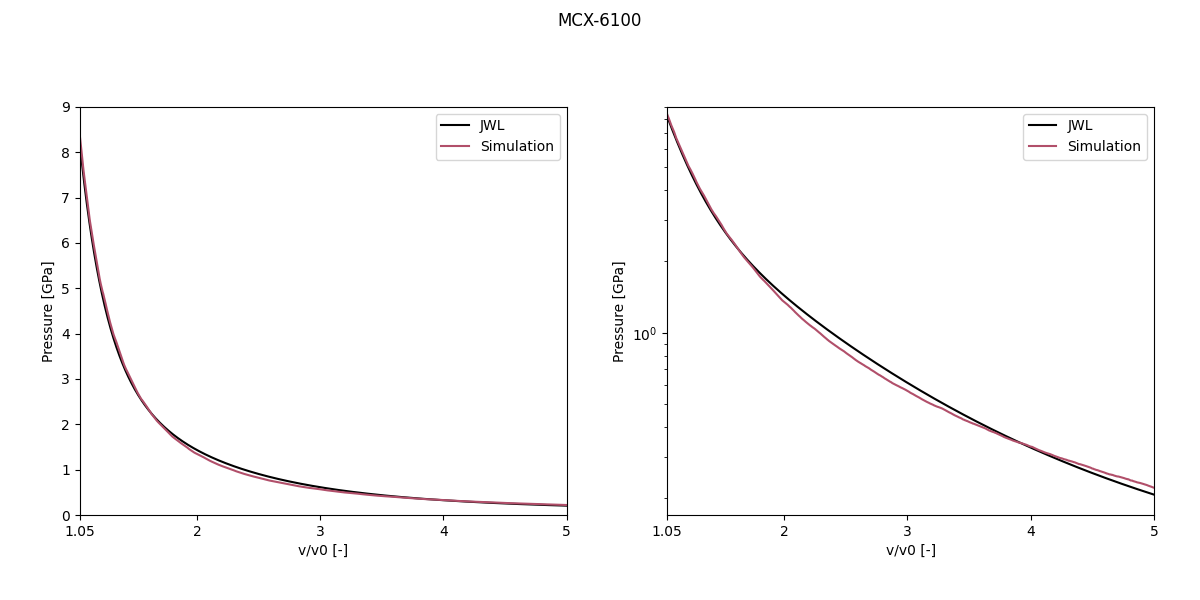
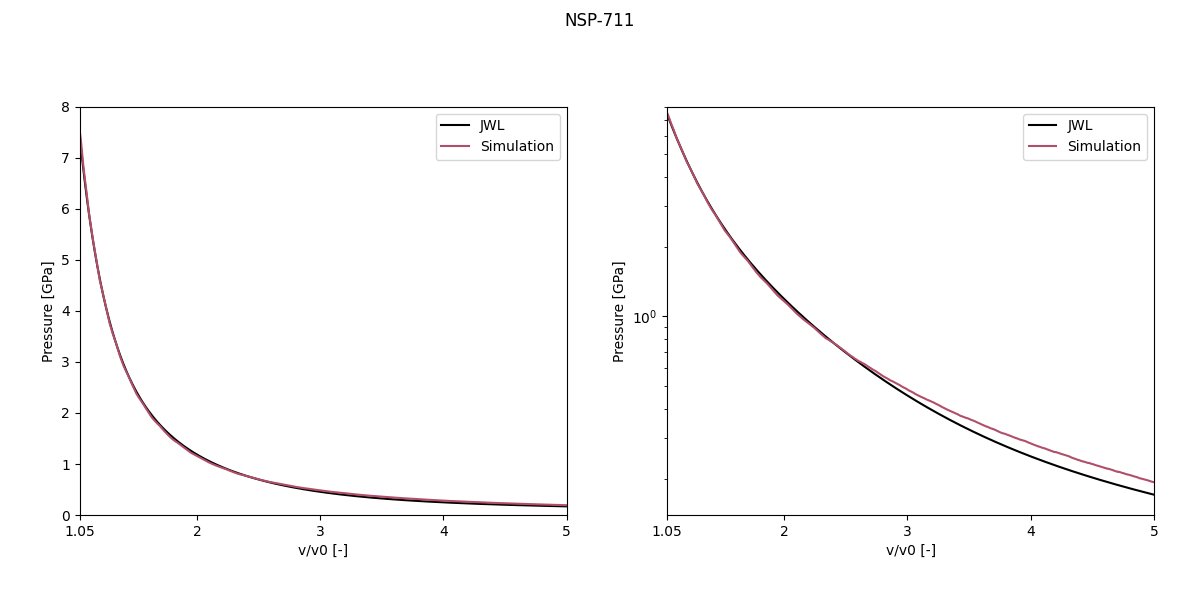
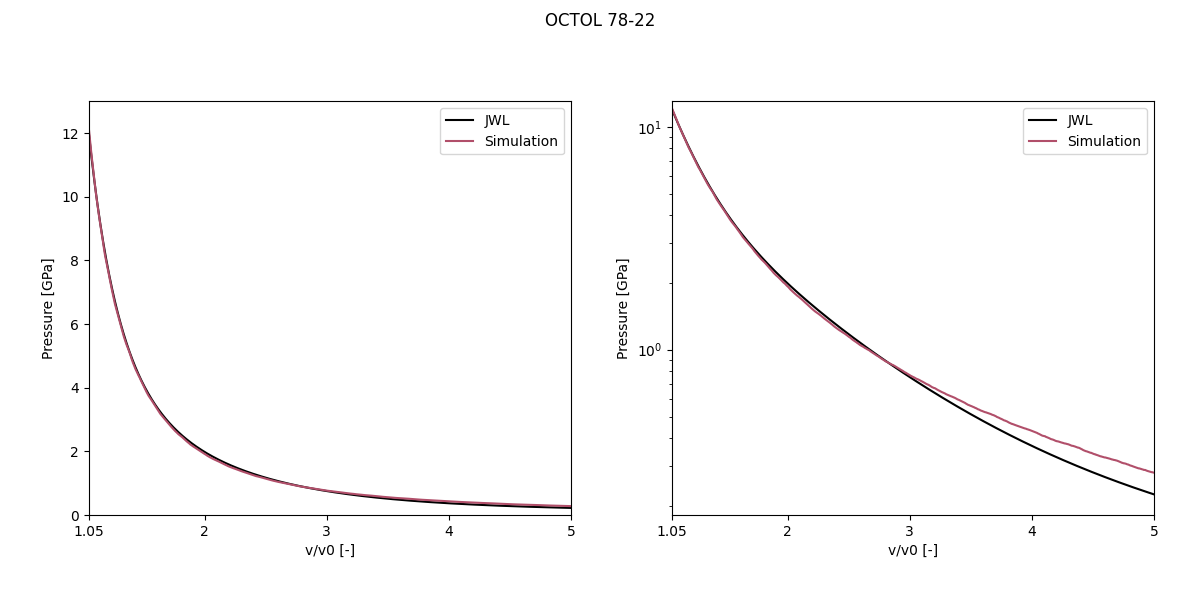
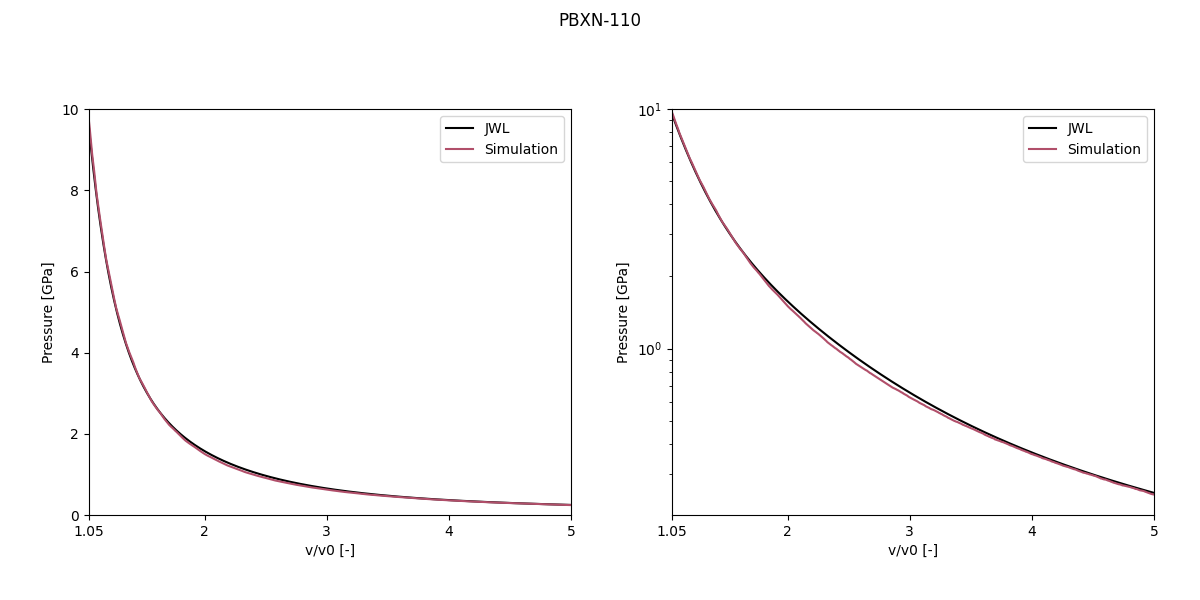
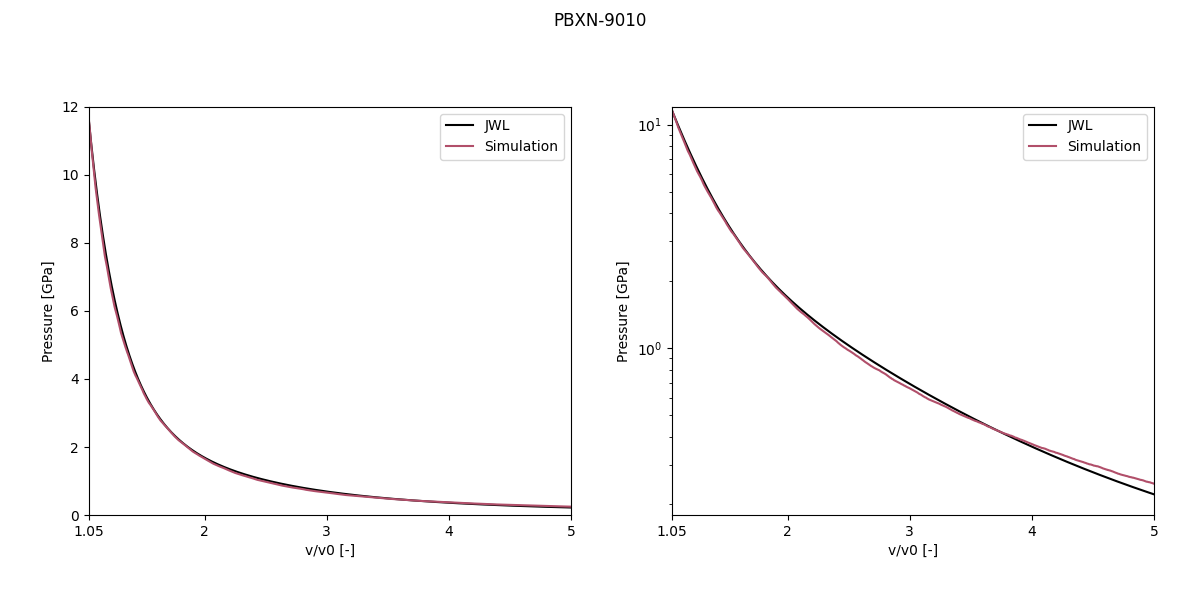
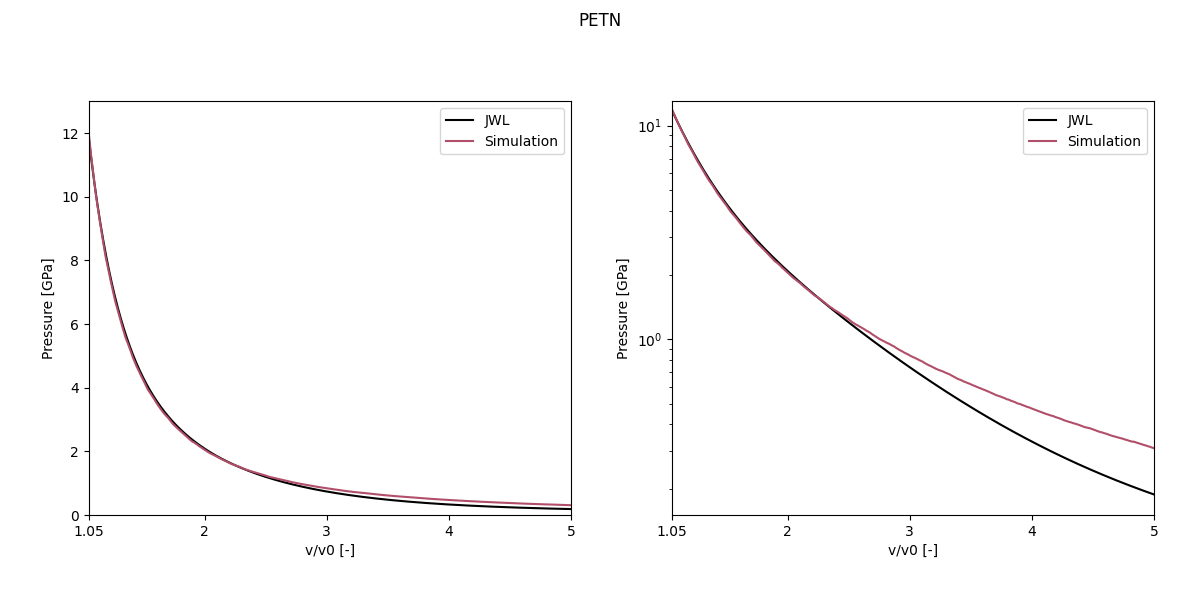
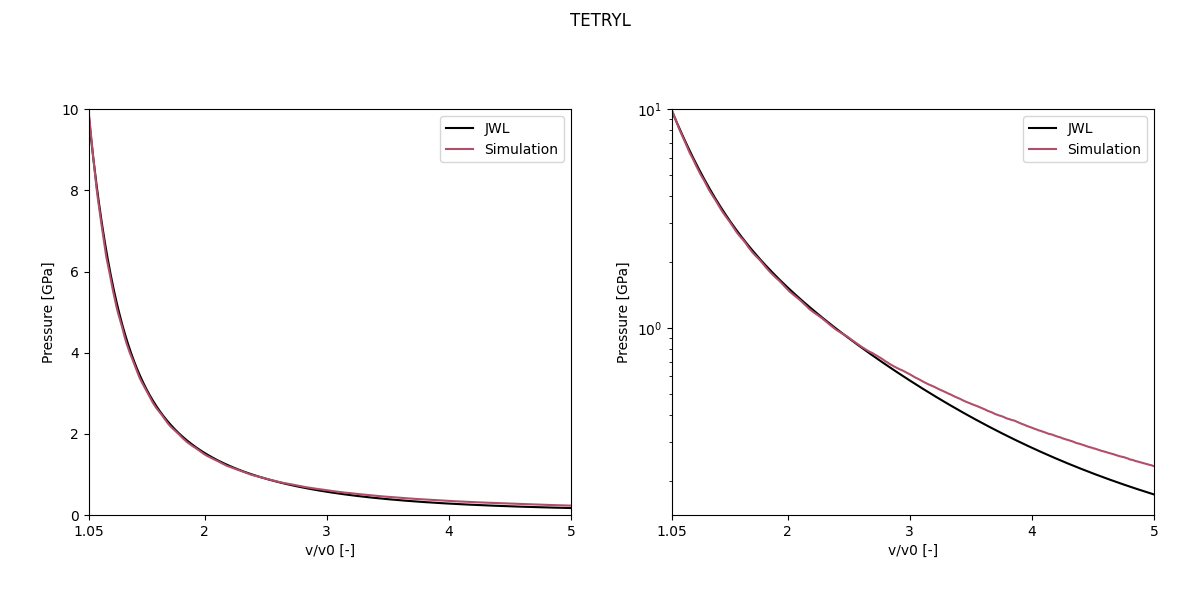
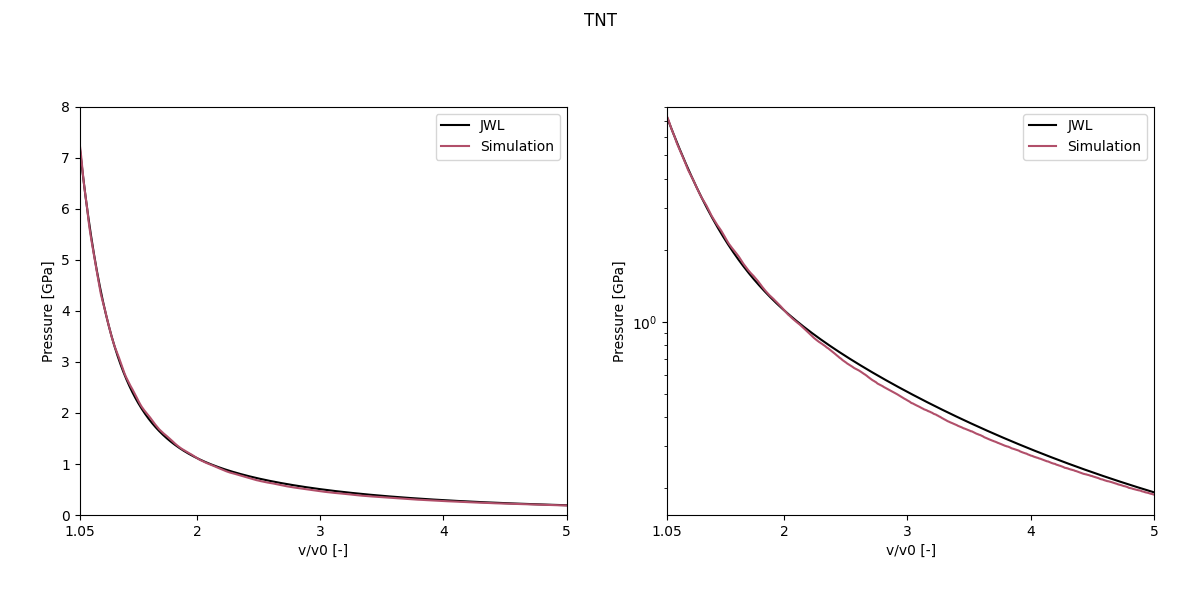
Data required for calibration of explosives
Users can calibrate explosives of interest by downloading the controlled expansion test model from IMPETUS Market. The following data is required to calibrate an explosive for the discrete particle module:

References
 - B. M. Dobratz, P. C. Crawford, LLNL Explosives Handbook - Properties of Chemical Explosives and Explosive Simulants, Lawrence Livermore National Laboratory, 1985.
- B. M. Dobratz, P. C. Crawford, LLNL Explosives Handbook - Properties of Chemical Explosives and Explosive Simulants, Lawrence Livermore National Laboratory, 1985.
 - L. Penn, F. Helm, M. Finger, E. Lee, Determination of Equation-of-State Parameters for Four Type of Explosive, Lawrence Livermore Laboratory, 1975.
- L. Penn, F. Helm, M. Finger, E. Lee, Determination of Equation-of-State Parameters for Four Type of Explosive, Lawrence Livermore Laboratory, 1975.
 - G. O. Nevstad, Determination of detonation velocity and pressure for MCX-6100, FFI-rapport 2015/02323, 2015.
- G. O. Nevstad, Determination of detonation velocity and pressure for MCX-6100, FFI-rapport 2015/02323, 2015.
 - A. Helte, J. Lundgren, H. Örnhed, M. Norrefeldt, Evaluation of performance of m/46, FOI-R--2051--SE, 2006.
- A. Helte, J. Lundgren, H. Örnhed, M. Norrefeldt, Evaluation of performance of m/46, FOI-R--2051--SE, 2006.
 - O. Ayisit, The influence of asymmetries in shaped charge performance, International Journal of Impact Engineering, volume 35, pages: 1399 - 1404, 2008.
- O. Ayisit, The influence of asymmetries in shaped charge performance, International Journal of Impact Engineering, volume 35, pages: 1399 - 1404, 2008.
Tests
This benchmark is associated with 16 tests.
